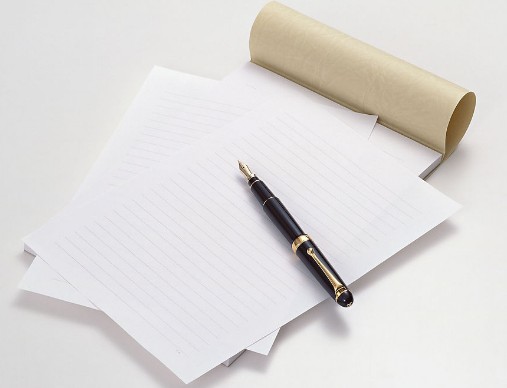

文书虐我千百遍, 我待文书如初恋。申请季一到, 成千上万的小伙伴们就开始了日复一日的苦逼文书之旅。然而, 在我们千辛万苦得完成CA主文书写作后,美国大学(主要集中在综合排名前60的大学)还有不同题目以及不同要求的essays, 基本上每篇文章都要重新构思和撰写, 简直累觉不爱。
这是为什么呢?原因很简单,本科申请者并不像研究生申请者一样具备很强的专业,学术背景和成绩,而学校在评定申请者能力的时候也不像研究生将主要目光放在申请者的学术能力上,相反更多考察的是申请者的个人综合能力。而千变万化的essays正是让学校了解大家综合能力的渠道。学校希望能够从申请者的essay中了解到诸如兴趣爱好,思想境界,背景经历等多方面的信息。在很多学校对essay的要求中都有一句话提示申请者在文中提供"其他申请材料所没有表现出来的"东西,这实际上才是学校对本科申请者文书要求的核心。
常见的essay类型有“why essay”(eg.Why school / major);“community essay”(eg. Everyone belongs to many different communities and / or groups defined by shared geography, religion, ethnicity, income, cuisine, interest, race, ideology, or intellectual heritage. Choose one of the communities to which you belong, and describe that community and your place within it);“activity / experience essay”(eg. Please briefly elaborate on one of your extra curricular activities or work experiences that was particularly meaningful to you)。
本文着重介绍出现最频繁的 “why essay” 及其写作技巧。
“Why Essay”一般出现在CA系统的supplement部分。大致的问题如“你为什么想来我们这所学校?” “你希望从我们学校获得什么” “你为什么选择这个专业” “如果你目前还没有选专业,你的学术兴趣和目标是什么,以及你对未来有什么规划”等等。这种问题用于区分学生是否真的对这所学校有passion或者fit。

大家常把“why essay”定义为给美国大学的“情书”。竟然是一封“情书”,那么掌握一定的“求爱技巧”是必不可少的。
第一步:了解学校
通过各种渠道去了解这个学校的特色,比如大学官网,www.shenqing.me,usnews,Princeton review,校友或者学校的巡展活动。找出这个学校吸引你的地方,不论大小都可以。
第二步:了解自己
一般情况下,当你写到why essay的时候应该已经到了申请中期,也通过头脑风暴或自我反思在一定程度上了解了自己。如果没有的话,花几分钟时间回顾一下过往活动,起码得知道自己的性格,学术上的长短处在哪里。
第三步:将学校吸引眼球的点缩减成特质并联系自己(找到自己和学校特质间的联系)
当你挖掘出那么一,两个吸引点后,要学会透过表面看事情本质。因为学校的特色和申请者不可能有直接关系,但是这个特色代表的意义可能和申请者自己的追求不谋而合,就会形成一个fit。
例如:威斯康辛麦迪逊分校的工程学院标出他们已经连续6年每年都出产超过100个专利。申请者当然不能说这100个专利和自己有什么关系,因为大部分的申请者不可能有自己的专利,而且就算有也和威斯康辛的100个专利无关。但是透过威斯康辛骄傲的标出自己100个专利出产可以总结出,这个学校特别专注实验和实践。相信“实验”和“实践”这两个特色是很容易和学生自己产生共鸣的吧。同时,当你已经把本质挖掘到这个地步,写出来的内容也不会是泛泛而谈的。
第四步:融合和证明
证明不能只靠说的。当前三步骤做完后,就剩一篇有力度的文章去证明申请者的fit了。这里,每个申请者都有自己的风格和习惯。

“Why essay”可分为“why school”和“why major”,分别可从以下几个方面进行研究。
Why School
1.警言,校训:学校有什么spirits, motto,mission是你特别赞同并有所实践的?
2.课程设置:有没有你曾经听过online open course是跟这个学校某些课程相似的内容?读过什么书跟它里面的某节课的必读书目相似等。
3.教授:具体到那位老师的哪个实验室项目,你曾经有过一些简单的相关领域的认识,希望有机会加进去,进一步得到系统训练和指导?同时将自己之前的一些不成熟的想法带到团队中去inspire others。
4.学校服务:图书馆,餐厅,住宿等有没有对国际学生有专门的服务,而作为internationalstudent的你,会在其中受益,并反过来做出自己的贡献?
5.学生团体:有什么学生社团你曾经有相关经历,可以加入继续作贡献,或者学校没有某个社团,你愿意过去利用平台组织建立起来,为学校多元文化做贡献?
Why Major
1.先回忆一下自己的背景,你的专业兴趣到底是如何产生的?是老师的一句话,电视里的一个场景还是新学的一个知识?是跟爷爷从小长大耳濡目染的热情还是火箭升空时一瞬的决心?
2.去Wikipedia一下这个专业,找到自己比较感兴趣的分支,或者研究方向,或者社会话题相关的技术倾向(比如增强现实,比如云计算,比如社交网络设计与用户体验)。
3.去学校专业页面下面看一看,找找相关专业的相关阅读书目,核心课程,培养学生的主要技能,以及毕业后的就业方向,以引导你的职业规划。
4.去学校官网和学院看一看,比如基础课程特色,肯定有很多practical的课程设置,有些会非常新颖,非常有意思,那么你可以在此基础上激发自己的一些创新想法,联系自己之前的一些经历来展现你对未来自己专业的准备和认知。
等等很多方面,你都可以去考虑,但把握一点,就是高度的individualized,不要让招生官一看,你说的东西,放到哪个学校里都成立。那样写了等于白写。
总之,对于Why essay写作来说还要有对学校特色的充分了解,避免张冠李戴。同时,更要有自己的真情实感,这样才能打动招生官,让学校有充足的信心录取你。

最后附带一篇Y同学申请布朗大学与罗德岛设计学院合作的A.B./B.F.A.双学位项目的“why major” essay, 巧妙的把她对历史学(申请专业)的热爱与艺术(主文书展现的是她在美术方面的天赋)联系起来。
My rule of choosing major is simple. Passion decides all. Especially when I saw the words printed on the booklet I brought from Brown summer admission presentation in Shanghai, I pinpointed my dream school and major immediately. A program combining my two academic idealities, undoubtedly is not A CHOICE, but THE CHOICE.
As a student who benefits for more than ten years in study, from my wide reading and interests, I understand the promoting impact between disciplines exists among all fields,so the case of history and fine arts is the single one. History is the most catholic subject, including every academic field we human-being founded. Everything once existing in this world now generates a part of history, so art,as the one of major ways people use to express opinions and feelings, show the judgment that people of certain generation hold about events and figures. Or sometimes, when the most reliable archaeological evidence and official record lack, art forms, especially fine arts, created by the contemporary witnesses, become the most stable foundation on which we establish our suppositions.
In turn, artists need comprehensive understanding about the objects they depict. When I learned sketching years ago, the main objects of my sketches were plaster models of historical figures, like, Voltaire, David, Gorky, and so on. The most touching part of the models is always the eyes, through which morale and vigor are shown incisively. To depict their expressive eyes inplace, I should understand the emotions embraced in their sight, feeling stwisted with their brow ridges, and stories hidden in lines of their hair and skin. All these connotations can be discovered exhaustively by reading historical materials, understanding the backgrounds of those figures, and figuring out the reasons why they show diverse looks. As for Chinese traditional painting skills, different dynasties favor different painting styles. Tang dynasty advocated plump images with luxuriant tone and compositions, resulting from contemporary people's desire to show the prosperity of the flourishing period, while Song dynasty preferred lean characters with simple colors and lines, on account of artists pent-up emotions caused by disintegration of country land. To command the essence of different genres of traditional paintings, being familiar with the historical soil they germinated from is necessary.
I'm not sure whether I would start a career tightly relative to history or fine arts, because I don't choose those two majors out of the concern of planning my career development. As I said in the Cross-Strait Debating Competition two years ago: “The right college won't build you a broad road to a brilliant career, but an integrated personality leading to success of real meaning, that's, whatever you do in the future, this world become lighter on your own account.”





